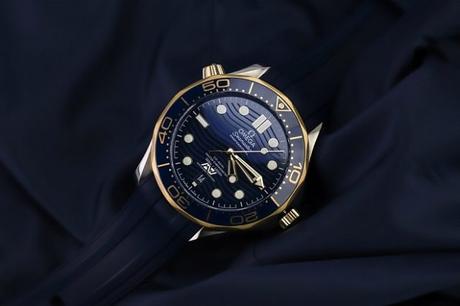
The clock face or the watch dial is essentially the most visually striking component of a timepiece that every watch enthusiast takes into consideration before buying. The reason why watch enthusiasts always take watch dials into consideration before purchasing is because it's one of the features that catch the attention of everybody the most.
Similar to the various different movements of a watch, the finishing of a watch dial is what distinguishes it from different types of brands and watches. The finishing of a watch can be divided into many different ways before the main plate and bridges hold the parts of the watch together. The sturdy and calculated fashion of the main plate and bridges will always differ in every watch.
The common material used to finish watch dials is by brushed or matte finish as well as using a clear lacquer to coat the plate for protection. However, you have to keep in mind that different metals can also be used to incorporate different finishing methods. Thus, here is a gentleman's guide to different types of watch dials.
Watches that have the nice and simple dial can sometimes be referred to as the Tiffany dial. The co-signed dial can sometimes be referred to as the Tiffany dial because it has the name of the brand that made the dial, which is Tiffany & Co., and the name of the retailer that sold the watch on the dial.
The co-signed dial can mostly be seen in Patek Philippes and Rolexes and that it increases the watch value as well as its price because of its worth and reputation.
The crosshair dial is a famous design dial theme from mid-century dress watches and has a distinct horizontal and vertical line that meets in the middle of the face of the clock. The horizontal line will start from 12 to 6 while the vertical line will start from 3 to 9 and will appear as a crosshair
The crosshair dial can be seen in luxury watches such as Omega Seamaster, Omega Constellation, Rolex Oyster Perpetual, and many more. The length and breadth of the lines can sometimes extend all the way to the edge of the dial depending on the watch, however, the common crosshair design will end inside the hour markers.
Enamel dials involve rendering color with an everlasting sheen along with different techniques of enamel dialing. The reason why enamel dials existed was to replace the metal types of dials to add decorative colors to the clock face of the watch.
Enamel consists of silica, red lead, and soda that is heated between 800 to 1200 degrees Celsius that is liquified and bonded to metals that make up the soft glass. Artisans of enamel mainly called enamellers mix in different elements to make up different colors such as chromium for green, iodine for red, and iron for gray.
Further, there are also a number of artisans that have experience with enamel dialing, making watches with enamel dials specially made for exclusive, high-end luxury watches. It takes a lot of time and expertise to complete enamel dials since the tolerances and finishes of the enamel dials are extremely difficult and unforgiving.
The most recognizable form of enameling is cloisonne. The draft of the design of the cloisonne is directly drawn in pencil onto the dial of the watch, the artisan will then bend ultra-thin wires of gold and arrange it along the outline. Further, the outline will then be painted with five layers of enamels while firing after each layer has been finished.
The Grande Feu literally translates into Great Fite and is the most complex enameling technique, but is also the most durable enamel dial. Unlike the elaborate and vivid colors of cloisonne, the Grande Feu are uniform in color usually in the form of cream or white, some rare models of watches are even in black.
There are many different types of watch dials that can impact your style as well as the overall functionality of the watch. But, you have to think about their differences and their features before buying the watch to see how you'll be using the watch, and how the watch will serve its purpose. Keep in mind that co-signed, crosshair and enamel are just a few of the different types of watch dials.


